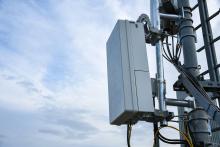WLAN NIC client utilities let you adjust all the virtual knobs and dials that come with wireless. Client utilities can be used for a number of functions, including storing WLAN network names, managing security parameters and tuning radio output power. A nice feature for users accessing multiple WLANs, perhaps at home and at the office, is the ability to maintain named configuration profiles that include optimal configurations for whichever network you are using at the time. Many client utilities also provide tools for conducting site surveys or troubleshooting problems.
Performance Considerations
Throughput should be between 50 percent and 60 percent of a product's data rate. For 11b NICs, look for a maximum single-station throughput of about 6 Mbps; for 11a and 11g products, expect around 27 Mbps. Of course, throughput is usually lower in the real world, where contention for network access exists.
|
Mobile & wireless Web Links
|
Range is also a fundamental consideration, but there is no simple specification that will provide you with a clear predictor. A radio's output power, usually measured in milliwatts or dBm, is often associated with range, but so too is the radio's receiver sensitivity, the quality of its antenna design, and the system's ability to deal with multipath and other interference sources. For some applications, like a home wireless network or a low-density warehouse application, maximum range is clearly best. However, for many enterprise applications, where smaller cell size is needed to boost per-station performance, long range can be detrimental, causing interference with adjacent cells. The best products available provide features that support dynamic power output.
Looking Forward








